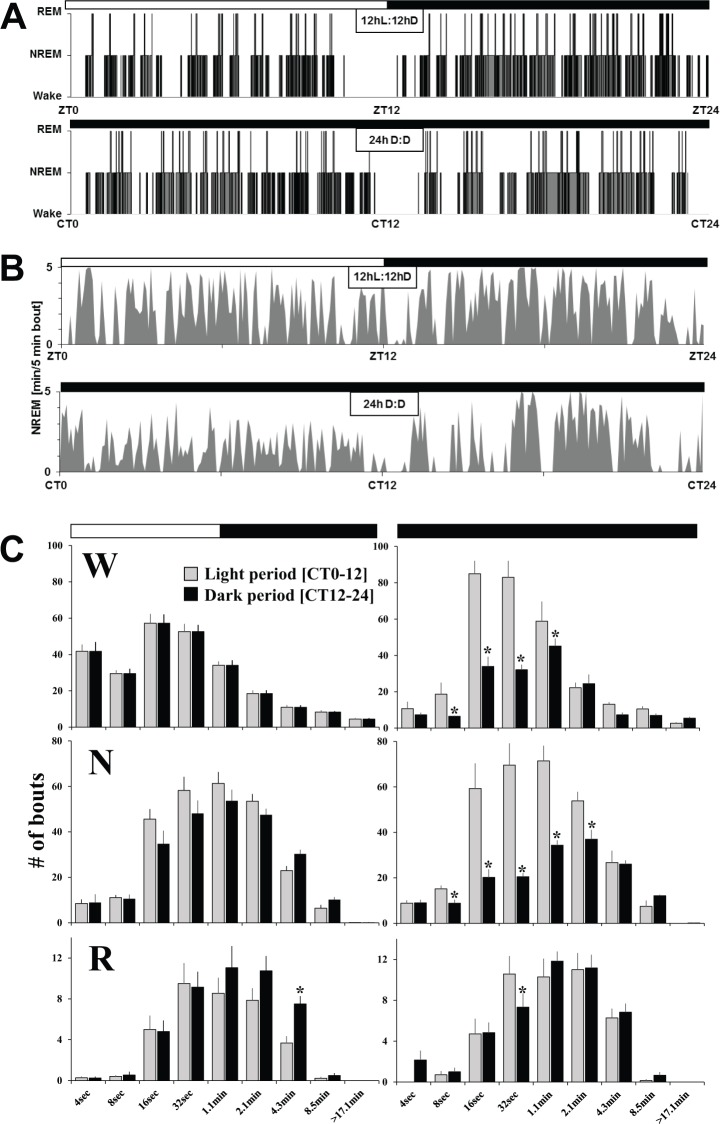Figure 3.
Twenty-four hour distribution of sleep and waking under 12hL:12hD and 24h D:D. Examples of a hypnogram based on 4-sec epoch scoring (A) and of non-rapid eye movement (NREM) sleep per 5-min bouts (B) in two different Arvicanthis ansorgei across 12hL:12hD and 24h D:D conditions. Frequency distribution of W, NREM sleep, and REM sleep episode lengths (C) during 12hL:12hD versus 24h D:D. Vertical bars represent the number of episodes (mean + standard error of the mean) expressed as time spent during light or dark periods (left) or subjective light or dark periods (right), in each state by episode duration. Two-way analyses of variance (ANOVAs) were performed to examine bout length differences as a function of light/dark period as well as lighting condition (12hL:12hD versus 24h D:D). Significance was seen at differing points. pLight condition × L vs. D < 0.05 (W- 16 sec, 17.1 m; N- 16 sec, 32 sec, 1.1 min; R- 4 sec). pLight condition < 0.05 (W- 4 sec, 8 sec, 1.1 min; R- 4 sec). pL vs. D < 0.05 (W- 8 sec, 16 sec, 32 sec, 4.3 min, 8.5 min; N- 8 sec, 16 sec, 32 sec, 1.1 min, 8.5 min; R- 4 sec, 4.3 min). Asterisks represent significance between subjective light and dark phases (one-way ANOVAs, post hoc t tests P < 0.05). D, dark; L, light; N, non-rapid eye movement; R, rapid eye movement; W, wake; ZT, Zeitgeber time; CT, circadian time.

